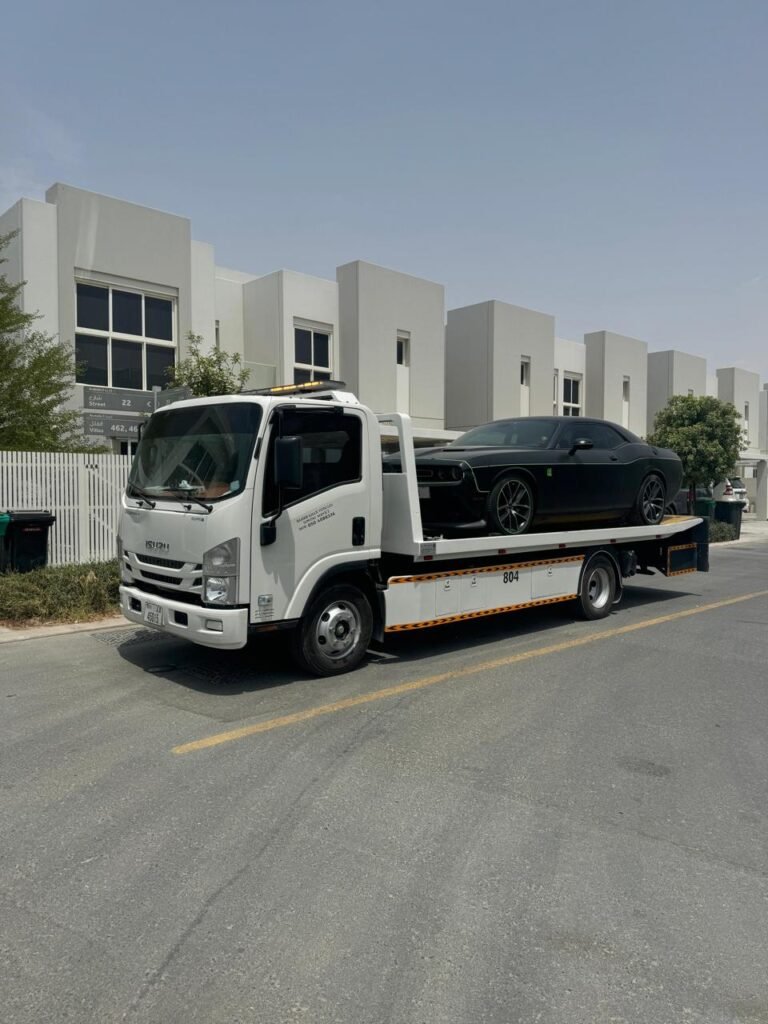Car Recovery
Car recovery is an key service for anyone who drives a vehicle. Whether you’re involved in an accident, your car breaks down, or you experience some other form of vehicle-related trouble, car recovery services are there to help you get your vehicle back on the road. knowing how car recovery works, what services are available, and how to prepare for a car recovery situation can save you time, money, and stress when unexpected issues arise.
What Is Car Recovery?
Car recovery refers to the process of sheeting a broken-down, damaged, or immobile vehicle to a fix shop, garage, or other desired location. Car recovery services are typically called upon when a car becomes inoperable due to mechanical failure, an accident, running out of fuel, flat tires, or other issues that make it unsafe or impossible to drive. The goal of car recovery is to safely and efficiently get the vehicle to a location where repairs or further diagnostics can take place.
Car recovery can involve a variety of tasks, including:
-
Towing
: Using a tow truck to move the vehicle.
-
Roadside Assistance
: Minor repairs or services such as jump-starting a battery, changing a flat tire, or delivering fuel.
-
Accident Recovery
: The removal of a car involved in an accident and transporting it to a place for insurance processing or repairs.
Most car recovery services are provided by specialized towing companies, roadside assistance programs, or insurance providers who partner with trusted recovery operators.
Types of Car Recovery Services
Car recovery can involve a wide range of services depending on the situation and the condition of the vehicle. Some of the most common types of recovery services include:
-
Roadside Assistance
Roadside assistance is designed to address minor car problems without the need to tow the vehicle. Many car manufacturers, insurance companies, or third-party providers offer roadside assistance packages. These services typically cover:
- Flat tire rep air or replacement.
- Battery jump-start if the vehicle won’t start.
- Fuel delivery if the vehicle runs out of gas.
- Lockout services if the keys are locked inside the car.
Roadside assistance is a convenient service for situations where the issue is minor and can be Fastly soloed on-site, allowing you to continue your journey with minimal disruption.
-
Towing Services
Towing is the most common form of car recovery when a vehicle cannot be driven. Towing services are essential when:
- The car is immobilized due to mechanical failure.
- The car has been in an accident and cannot be driven away.
- The vehicle has been abandoned or left illegally.
- The car needs to be transported to a specific location for repairs, storage, or insurance purposes.
There are several types of towing, including:
- Flatbed Towing: The vehicle is driven onto a flat policy for safe transportation.
- Hook and Chain Towing: This method uses chains to lift the car by the axle or frame. This is now less common due to potential harm to the car.
- Wheel-Lift Towing: This method involves lifting the vehicle by the wheels using a metal yoke. It’s spicily used for light-duty towing.
- Integrated Towing: This is typically used for larger vehicles or cars, where the towing equipment is integrated into the car’s chassis.
-
Accident Recovery
In the event of an accident, a recovery service may be needed to safely remove the vehicle from the scene. Accident recovery bills more than just towing the car; it also includes the removal of debris, ensuring the safety of the scene, and securing the vehicle for insurance purposes. A paid recovery service will work with law enforcement and insurance companies to ensure that the car is safely towed and all necessary steps are taken to ease the claims process.
- Vehicle Transport Services
Sometimes a vehicle needs to be transported over a long distance, either for relocation, a car show, or delivery to a new owner.. These services are often coordinated with shipping companies or specialized car transport services that use larger haulers to transport multiple vehicles at once.
How Car Recovery Works: Step by Step
Understanding the basic process of car recovery can help you know what to expect when you call for assistance:
Step 1: Contacting a Recovery Service
The first step in any car recovery position is to contact a recovery service. You can call a local towing company, a roadside assistance provider (like AAA), or reach out through your car insurance company if you have reporting that includes recovery services.
When you contact a recovery service, be ready to provide the following information:
- Your exact location (including landmarks or highway mile markers if important).
- A description of the vehicle and the issue (e.g., “The car won’t start” or “I was involved in an accident”).
- Whether the vehicle is in a hazardous location (e.g., on a busy road or in a dangerous area).
Step 2: Assessment
Once the recovery team arrives, they will assess the situation. If the issue can be resolved on-site (such as a dead battery, flat tire, or fuel shortage), the recovery team may provide roadside assistance. In more serious cases, they may need to tow the car.
Step 3: Recovery and Towing
If towing is necessary, the team will carefully load the vehicle onto the appropriate towing apparatus, ensuring that it is secured for transport. The vehicle will then be taken to fix shop, garage, or another location as specified.
Step 4: Post-Recovery Services
After the car has been recovered, the next steps depend on the situation. If you are covered by insurance, the recovery company may assist in submitting the claim, or the car may be taken to a location for further inspection. In some cases, if the car was involved in an accident, it may need to be towed to a police-impounded area.
If the vehicle was involved in an accident, the recovery team will also work to ensure that any debris or hazards from the crash site are cleared to ensure the safety of other drivers.
The Role of Insurance in Car Recovery
Many insurance policies offer car recovery services as part of a broader roadside assistance package. Typically, these services are included in comprehensive, collision, or breakdown insurance plans. However, the extent of the coverage can vary depending on the insurance provider and the type of policy you have.
Some insurance plans may include:
- Towing to the nearest repair facility.
- Transportation fees if the car is beyond repair or if you need to be transported to another location.
- Accident recovery services to remove and store your vehicle after a crash.
Having car recovery coverage in your insurance policy can reduce the out-of-pocket costs for these services. However, if you don’t have roadside assistance as part of your policy, you may need to pay for recovery services directly at the time of service.
Preparing for a Car Recovery Situation
While you can’t always predict when you’ll need car recovery, there are steps you can take to make the process easier if the place arises:
-
Have Roadside Assistance Coverage
: Whether through your insurance provider or a third-party service, having access to roadside assistance can save time and hassle.
-
Keep Emergency Contact Information
: Keep the number of a reliable towing service or recovery provider in your caller vehicle documentation.
-
Ensure Your Vehicle is Well-Maintained
: Regular car maintenance (e.g., checking the oil, battery, tires) causes of breakdowns.
-
Carry Basic Emergency Supplies
: Having items like a spare tire, jack, jumper cables, flashlight, and first-aid kit can help in some situations, especially if you’re waiting for help to come.

